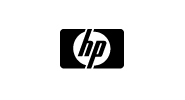NonStop S-series Server Administration I
Course number U5448S
Delivery method
Remotely assisted instructional learning (RAIL)
Instructor-led training (ILT)
Onsite dedicated training (OST)
Course overview
You are introduced to the architecture and basic software functionality, including functions of OSM, TACL, and Subsystem Control Facility (SCF) for system, disk drive, tape drive, and communications lines monitoring. Functional command usage to monitor system files using FUP and monitoring the system spooler with PERUSE and SPOOLCOM commands are also covered. The five-day course is 80 percent lecture and 20 percent hands-on labs using HP servers.
Prerequisites
Concepts and Facilities for NonStop Systems (U4147S) or
At least 6 months operational experience on NonStop servers
Audience
System operators
System administrators
System analysts
Technical support analysts
Course objectives
At the conclusion of this course you should be able to:
- Be familiar with the NonStop S-series server architecture, OSM, TACL, and SCF commands
- Demonstrate the use of TACL, FUP, and SCF commands to monitor the server, files, disks, tapes, and communication lines
- Demonstrate how to view, modify, and correct system spooler and print job problems using PERUSE and SPOOLCOM
- Describe how to monitor and manage LAN and WAN environments
- Describe how to manage security, disks, tapes, processes, and applications
Next steps
HP NonStop S-series Server Administration II (U5449S)
Benefits to you
- Gain skills and knowledge needed to optimize S-series servers so users experience smooth functioning IT operations
- Obtain valuable hands-on experience using OSM, TACL, and SCF commands
Course outline
Module 1 - Course Overview
Module 2 - Computing Environments, Operator Tasks, and Introduction to TACL
- Basic data processing
- NonStop server operations
- Problem solving and problem prevention
- Introduction to TACL
- The TACL environment
- Lab exercise: monitoring system hardware
Module 3 - NonStop S-series Server Architecture
- NonStop S-series server architecture and system console
Module 4 - Operator Tools: OSM and SCF
- OSM overview
- Monitoring enclosures, hardware, and software
- Event Management Service (EMS)
- Monitoring processors
- The Subsystem Control Facility (SCF)
- Monitoring disks, printers, tape drives, and terminals
- Lab exercises: SCF and hardware monitoring
Module 5 - Managing Files
- File system introduction
- The File Utility Program (FUP)
Module 6 - Managing Security
- Background
- Managing NonStop kernel security
Module 7 - Managing Disks and Tapes
- Introduction to the storage subsystem
- Checking disk drive actions
- Tapes and tape drives
- BACKUP and RESTORE operations
- Labeled-tape operations using MEDIACOM
- Common tape problems
- Lab exercise: Disk Space Analysis Program (DSAP)
Module 8 - Managing Processes and Applications
- Processes (background)
- Common process problems
- Pathway/iTS applications
- Client/server applications
- The NonStop Transaction Management Facility (TMF)
- Lab exercise: monitoring and manipulating processes
Module 9 - Managing Printers and the Spooler
- Background
- Common spooler and printer problems
- Working with spooler jobs (PERUSE)
- Lab exercise: printers and the spooler
Module 10 - Managing LANs and WANs
- ServerNet communications subsystems
- Common problems
Onsite Delivery Equipment Requirements
- One 2-processor NonStop Sxx000 server with G06.21 or later version of the NonStop operating system
- One PC per student in the class with connectivity to the NonStop S-series server
- One S-series server with OSM consolepooler and associated software installed on the server
- Upis u radnu knjižicu: ne
- Certifikat: ne
- Uvjerenje: ne
- In-house: ne
- Svjedodžba: ne
- Diploma: ne
